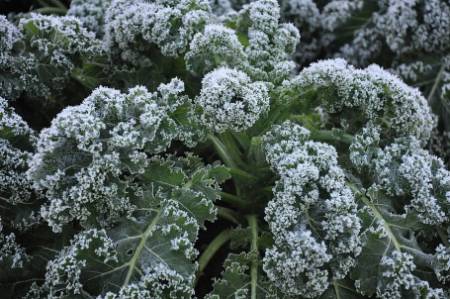Putting the Yard and Garden to Bed

Every year, the first frost brings the gardening season to an end, some years sooner than others. While the growing part of the season is over, that doesn’t mean our gardening season is over. Here are some things to get done before the first hard freeze of the year. When cold nights are forecasted, harvest any tomatoes, peppers, and other warm-season crops growing in your garden. I would even harvest the green tomatoes as they may continue to ripen on your counter if you harvest them before they freeze. You should also harvest any beans or potatoes that you might have planted. If you planted cole crops, most of them should tolerate light frosts. However, it would not hurt to cover them with a frost blanket, a sheet, or a regular blanket for nights with a low temperature forecasted to be in the mid-20 degrees. Most of our cole crops can handle temperatures down to 24 degrees, with the exception being cauliflower, but it is better to be safe than sorry when dealing with cold weather.
Fall is an excellent time of the year to control weeds in your lawn. Next year’s dandelions have germinated, and right now, all weeds are moving nutrients into their roots to help them make it through the long winter, which means broadleaf herbicides will also be taken to the roots. These young plants are small and easily controlled with herbicides such as 2,4-D or combination products (Trimec, Weed-B-Gon, Weed-Out) that contain 2,4-D, MCPP, and Dicamba. Choose a day that is 50 degrees or higher, as the better the weed grows, the more weed killer will be moved from the leaves to the roots. Cold temperatures will slow this process, but these products will still work at lower temperatures. The best way to prevent weeds in your lawn is to have a thick, healthy stand of grass, but that is a conversation for a different time. It is impossible to control 100% of lawn weeds, which is OK!
As we prepare to mow the yard for what is hopefully one of the last times of the year, it’s time to think about preparing your lawn mower for its long winter break. Be sure to drain the gasoline from gas-powered engines or use a gasoline stabilizer to prevent the gas from becoming thick and gummy. Check your spark plug or replace it so you are ready to mow in the spring. If you have a riding lawn mower or one with a battery, remove the battery and clean the terminals to prevent corrosion. Once you have serviced the engine, be sure to check the blades. Dull blades can damage the grass when you cut it and leave a “feathered” look on the ends of the grass blades. As you sharpen the blades, check for damage; if you can’t smooth it out, the blades must be replaced. Grind or file the edge of the blade till it is about 1/32 inch, as a razor-sharp edge can lead to a poor cut. Clean the blades and the underside of the mower to remove any matted grass.
If you seeded your yard this fall, continue to water it to keep the seedlings growing and ensure they are more likely to survive the winter. If it continues to rain, a mature lawn won’t need much water, but we want to ensure the lawn goes into the winter with moist soil. On warm days, continue to water the perennial beds and periodically water your trees and shrubs throughout the winter as needed. Remove all your hoses from hydrants and drain them before Monday night’s cold temperatures. While it will warm back up in just a couple of days, lows of 24 degrees could damage the hoses if water is left in them.

Have questions? Contact our office where our Horticulture Extension Agent will assist you with questions.
Phone: (316) 321-9660
Email: callae@ksu.edu